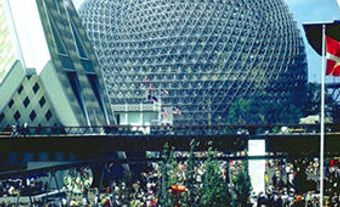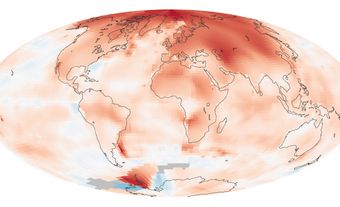The Montreal Biosphere is a museum dedicated to the environment operated by the City of Montreal. Located in Parc Jean-Drapeau on Saint Helen’s Island, the Biosphere is one of five museums in the city that focus on the natural world. The museum is housed inside a geodesic dome designed by the famed American architect Buckminster Fuller. The dome originally served as the American Pavilion during Expo 67. The Montreal Biosphere is the only museum in Canada exclusively devoted to educating the public about environmental issues.
Expo 67
The geodesic dome that now houses the Montreal Biosphere was originally the American Pavilion at the Universal and International Exhibition of 1967, better known as Expo 67. Expo 67 was a world’s fair that took place in Montreal in celebration of the 100th anniversary of Canadian Confederation. Though many countries’ pavilions were dismantled, former US President Lyndon Johnson donated the American Pavilion to the City of Montreal on 20 July 1967.
Did you know?
World’s fairs, also called expositions or expos, are international showcases of innovation. Countries from around the world design and furnish pavilions that highlight their cultural and scientific achievements. The first world’s fair was held in London, England, in 1851, and they have been held roughly every 5 years since. Recent fairs include those held in Shanghai (2010), Milan (2015) and Dubai (2020). In addition to Montreal’s geodesic dome, many other iconic structures, such as Paris’ Eiffel Tower and Seattle’s Space Needle, were born out of a world’s fair.
After the fair, the City of Montreal continued to use the pavilions and fairgrounds for an exhibition called “Man and His World.” The American Pavilion quickly became an important fixture of the new seasonal fair, which ran annually until 1984. Already a well-established local landmark, the pavilion featured a cinema, a gallery and an exhibition space. Foreshadowing its future occupation as a museum dedicated to the environment, the American Pavilion was used for scientific and popular exhibitions on environmental issues. It also housed garden displays and a collection of rare birds and plants.
Museum
The American Pavilion’s geodesic dome was made of a steel truss skeleton wrapped in a transparent acrylic skin. During renovation work on 20 May 1976, a fire engulfed the structure. The acrylic skin burned away, but the steel truss system was left undamaged. The structure remained standing, though it was no longer used for exhibits. It remained deserted for the next 14 years.
In 1990, Montreal adopted a management plan for Parc Jean-Drapeau, and Environment Canada signed a $17.5 million agreement with the City to convert the site into a museum. The agreement stipulated that the museum would showcase and study the water ecosystems of the Great Lakes and the St. Lawrence River. The agreement also specified that the museum would encourage civic action on environmental affairs. When it opened in 1995, the Montreal Biosphere became the first museum in Canada dedicated to the study of water. Montreal architect Éric Gauthier designed the new internal structures of the dome.
Environment Canada operated the Biosphere for 25 years, as were the terms of the original agreement with the City of Montreal. In 2021, Montreal took over the museum’s administration, as one of five nature museums operated by the city.

Geodesic Dome
Designed by American architect Buckminster Fuller, the Biosphere’s geodesic dome is 76 m wide and 62 m tall. An iconic Montreal building, in 2021 the New York Times named it one of the world’s 25 most significant works of postwar architecture.
The dome is an appropriate location for a museum dedicated to promoting and protecting the environment. Among his life missions, Fuller aimed to improve human dwellings by making them more efficient and affordable. He designed the geodesic dome as a means of achieving this goal. “Geodesic” designs use simple, triangular forms to create spherical objects. Geodesic domes enclose more space without supporting columns than any other structure, and therefore save on materials and cost. They are also more energy efficient than rectilinear spaces, in part because hot and cold air can circulate evenly throughout the structure.
Purpose and Exhibits
The Montreal Biosphere is dedicated to exploring the links between society and the environment. Its mission is to encourage citizens to take an active role in ecological and environmental issues. For example, an exhibit titled “Habitats 2067” asks visitors what elements make for sustainable urban neighbourhoods, while “Spaceship Earth” explores the environmentalist philosophy of Buckminster Fuller. The Biosphere also includes a belvedere offering a panoramic view of Parc Jean-Drapeau, Montreal’s Old Port and the city itself, as well as green roofs, an indoor garden, living plant walls, art installations and a fountain. The museum features an interactive lab designed to foster curiosity about environmental research, as well as immersive exhibits on climate change, meteorology, global warming and humanity’s relationship with the natural world. The Biosphere is illuminated at night, like many other Montreal landmarks.

 Share on Facebook
Share on Facebook Share on X
Share on X Share by Email
Share by Email Share on Google Classroom
Share on Google Classroom



